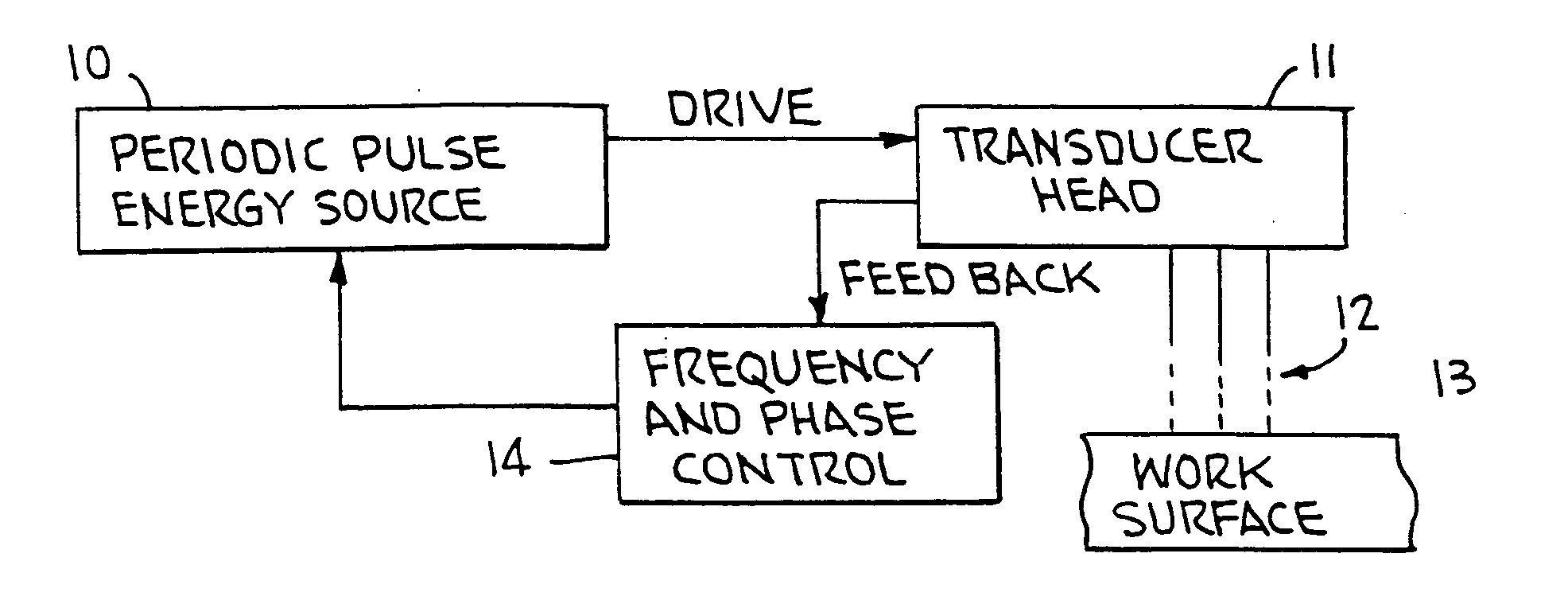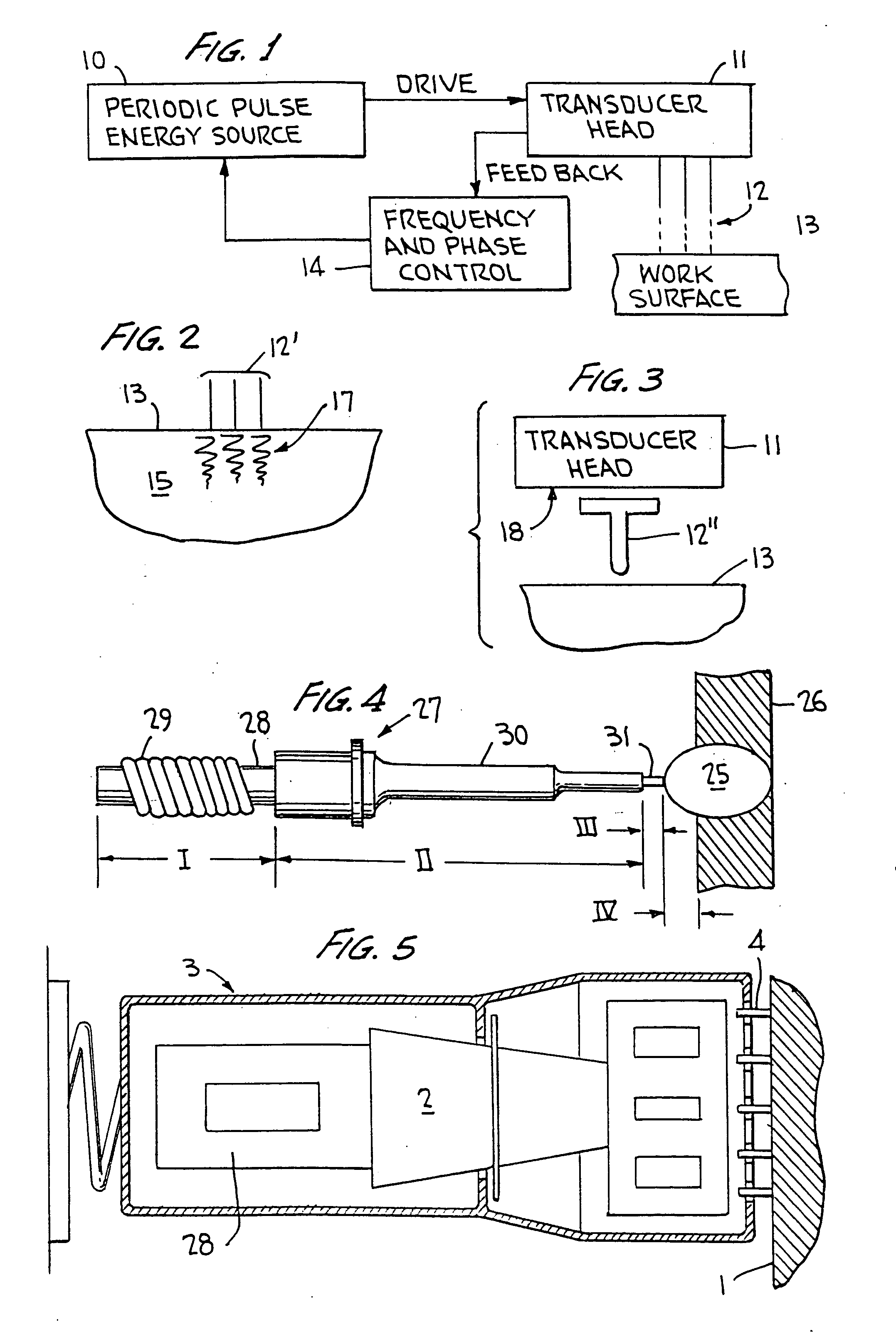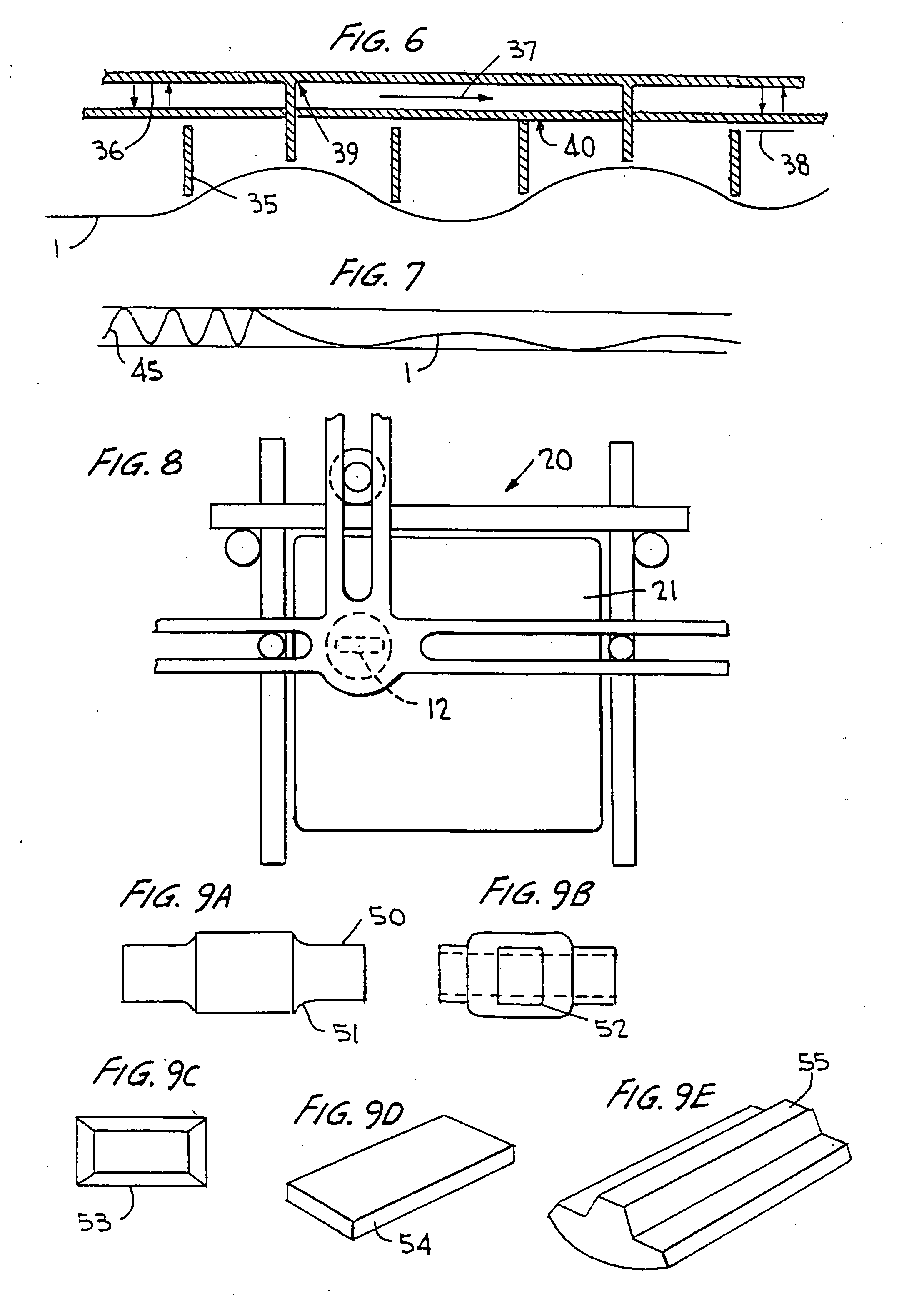Ultrasonic impact machining of body surfaces to correct defects and strengthen work surfaces
a technology of body surface and machining, which is applied in the direction of mechanical vibration separation, non-electric welding apparatus, metal-working apparatus, etc., can solve the problems of not revealing a feasible system, increasing strength, and insufficient power delivery of massive metal workpiece body by transducer horn system, etc., to achieve excellent power transfer efficiency, increase output power, and high velocity
- Summary
- Abstract
- Description
- Claims
- Application Information
AI Technical Summary
Benefits of technology
Problems solved by technology
Method used
Image
Examples
Embodiment Construction
[0058] With reference to FIG. 1 of the drawings, this block system diagram identifies the ultrasonic impact operating system for treating metallic workpiece surfaces, shown as work surface 13, by employing a set of ultrasonically movable impacting elements 12, presented typically as sets of three or four spaced members, for impacting the work surface 13 under control of the ultrasonic transducer head 11. The periodic pulse energy source 10, typically operable at ultrasonic frequencies up to 100 kHz, induces oscillations into the transducer head 11, preferably subject to feedback frequency and phase control 14 processing feedback from the working transducer head 11 to aid in matching resonance characteristics of the head when working on the work surface 13 in the manner more particularly set forth in the parent applications.
[0059] In FIG. 2, the impacting element set 12′ creates at the work surface 13 and extending into the sub-surface region 17 of a metallic work body 15, plasticiz...
PUM
| Property | Measurement | Unit |
|---|---|---|
| ultrasonic frequencies | aaaaa | aaaaa |
| frequency | aaaaa | aaaaa |
| temperature | aaaaa | aaaaa |
Abstract
Description
Claims
Application Information
 Login to View More
Login to View More - R&D
- Intellectual Property
- Life Sciences
- Materials
- Tech Scout
- Unparalleled Data Quality
- Higher Quality Content
- 60% Fewer Hallucinations
Browse by: Latest US Patents, China's latest patents, Technical Efficacy Thesaurus, Application Domain, Technology Topic, Popular Technical Reports.
© 2025 PatSnap. All rights reserved.Legal|Privacy policy|Modern Slavery Act Transparency Statement|Sitemap|About US| Contact US: help@patsnap.com



